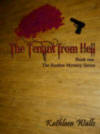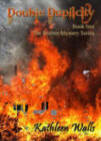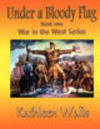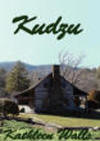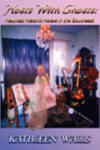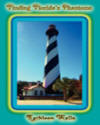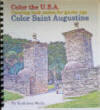Huntsville: Relive the Past and Foresee the Future
Story and photos
by Kathleen Walls
In Huntsville, you can foresee the future at the Space and Rocket Center. You can tour the museum’s artifacts from Apollo and Challenger to present day and experience a simulated space voyage aboard the Discovery Shuttle where you “launch” from Kennedy Space Center, go into orbit, and landing back at Kennedy.
There are many of the bigger rockets
outside on the grounds. What is so amazing at this Smithsonian
Museum is it’s authentic. In Davidson Center for Space
Exploration: Saturn V Hall you’ll see an authentic Saturn V
rocket. There are only three in the world. Another authentic
artifact is Casper, the Apollo 16 Command Module that, powered
by that Saturn V rocket, took John Young, Thomas Mattingly and
Charles Duke to the moon in 1972, and brought the happy
astronauts back with a load of 208 moon rocks.
You can sip a cocktail as you watch the
universe unfold above you in the planetarium or discover more
about the future of space travel here. If you want to dive
deeper, you can attend Space Camp for a week and learn to be an
astronaut. Aviation Challenge can teach you to be a fighter
pilot and Space Camp Robotics, digs into the use of robots in
space exploration.

You could spend days exploring the Space
Center and Planetarium, but you would miss the history of one
of Alabama’s oldest cities. The ratification of the original
Constitutional Convention in 1819 was held in a simple
two-story cabinet shop because it was the only building in town
large enough to seat the 44 delegates. The state rebuilt the
building on the same location and just as it would have been
when it was
Alabama’s Constitution Hall. A massive stone fireplace
heats the main part of the hall, although in August when the
delegates met, there would have been no use for a fireplace.
The woodworking tools are amazing. One of the saws is powered
by a rope tied to a tree branch suspended overhead and powered
by the worker pressing a foot pedal up and down.

There are three other main buildings in
the park. The Clay Building, a red-brick two-story building,
was the law office of Clement Comer Clay, who served in
Alabama’s Territorial Legislature, had a seat in the
Constitutional Convention and chaired the committee that wrote
the first draft of the Constitution. He was the first chief
justice of the Alabama Supreme Court and later Alabama’s
governor and U.S. senator. The Clay Building was also the
Huntsville Post Office and the office of the Federal Land
Surveyor’s team. The post office window and mail slots are
still there as is furnishing from the law office. Upstairs you
can see the surveying equipment used by John Coffee, surveyor
general for Northern Mississippi and Alabama territories, and
his men.
The other main buildings are Boardman
Complex, where the Alabama Republican, one of the earliest
newspapers in the Alabama Territory, was printed, and a
two-story frame house that was the residence of Madison
County’s first sheriff, Stephen Neal. You can step back to 1819
and take a 90-minute tour through the historic buildings that
display Huntsville as it moved from territory to statehood.
If you’re traveling with youngsters,
EarlyWorks Children’s Museum, designed mainly for ages of 2
and 9, is right next door. They can hear stories from the
talking tree or sail down the river on an authentic keelboat.
Next, head out into the historic section
and visit
Harrison Brothers Hardware Store. Harrison Brothers
Hardware started as a family-owned business and remained in the
Harrison family until the death of John Harrison in 1983. The
Historic Huntsville Foundation bought it and preserved the
tradition right down to the 1907 National Cash Register that
will ring up your purchase. They stock items like pottery,
housewares, toys, and arts and craft items. It’s a great place
to find that unique souvenir. There are many of the original
features in the store, including family pictures and history.
The
Weeden House
is another trip into the past you don’t want to miss. It’s in
Twickenham Historic Preservation District and was built in
1819. During the occupation of Huntsville during the Civil War,
Federal officers used it as headquarters. Gina, the house
museum director, told the story of the former inhabitants of
the home as she showed us the magnificent turn-of-the-century
furnishings. The most interesting was a woman named Marie
Howard Weeden. She was born in 1846, shortly after her father’s
death, so her mother gave her his name. She became a renowned
painter and poet and wrote and signed her paintings “Howard
Weeden.” She is best known for the intimate portraits she did
of African American former slaves in Huntsville, many of which
are displayed in the home. It’s even more fascinating to learn
she was legally blind and painted with a tiny three haired
brush to get greater detail.
If you don’t visit for the history, the
architecture is enough to draw anyone in. It’s a two-story
brick Federal style with a cantilevered staircase. The woodwork
detail is amazing.
Burritt on the
Mountain was the home of Dr. William Burritt, who believed
in being green before it became popular. He was a homeopathic
physician. When his first wife, Pearl, died, he remarried a
wealthy tobacco heiress, Josephine Drummond. After her death,
he moved back to Huntsville and built his retirement home on
Round Top Mountain. Construction workers must have thought the
good doctor was a few straws short of a bale when he ordered
straw stuffed inside the walls and ceiling for insulation. He
built the house in the shape of a Maltese Cross to get cross
ventilation and great mountaintop views. To top off that, rich
as he was, he used recycled material whenever possible. He had
only a cold shower in the basement, believing hot showers were
unhealthy. It proves that sometimes old ways just get recycled
and become new again. Unfortunately, it wasn’t a wife-magnet as
his third wife, a much younger woman, left him saying he was
trying to kill her. Maybe that cold shower down steep steps?
Burritt Mansion was Huntsville’s first
museum and still one of its most popular attractions. The
Historic Park also on the grounds features restored farm
buildings showcasing 19th century rural life in Alabama. One of
the most interesting buildings on the grounds is the Joel
Eddins House. This two-story log home, built between 1808 and
1810, is believed to be the oldest in the state. It was built
in Ardmore, Limestone County and moved to Burritt on the
Mountain to protect it. In addition, there are five other
houses, including a “dogtrot” and a “saddleback” house, a barn,
a church, and an old school. Historical interpreters show
normal activities of a nineteenth-century farm. The farm has
animals that would have been kept by the farmers in the 19th
century.
Huntsville was once filled with cotton
mills. One of these, Lowes Mill
is now Lowe Mill ARTS & Entertainment and is the largest
privately owned arts facility in the United States. The
historic factory building has been redeveloped into 152 working
studios for over 200 artists and makers, 7 galleries, a
theatre, community garden, and performance venues. I visited
recently and was enthralled. My favorite there is the cigar box
guitar makers. You will love it.
You can step back earlier to
Huntsville Historic Depot, where you experience life in the
1860s on the railroad. There is a model train exhibit showing
how it would have looked during the Civil War. There is some
graffiti left by soldiers during the Civil War. Ride the
mini-train and view the beautifully restored trains,
automobiles, and a fire engine. (They were closed temporarily
due to staffing shortages but hopefully will open again soon.)
If you’re feeling artistic, visit
Huntsville Museum of Art.
The galleries feature traveling exhibitions and their permanent
collection.
Huntsville, Alabama is a place most RVers
don’t think about when considering a visit. They should. It has
unique
Monte Sano State Park that can accommodate large RVs. How
many parks have a planetarium, museum, and Japanese Garden on
site? This one has. Wernher von Braun Planetarium presents
shows ranging from the composition of black holes and the
structure of stars to Harry Potter themed shows. The museum
honors the Civilian Conservation Corps, a group of young men
who built many cabins and public works at state parks
throughout the country during the Depression. During the year,
the Japanese Garden hosts two festivals, the Japanese Spring
Festival and the Autumn Celebration. The park sits atop Monte
Sano Mountain with a great view of Huntsville, just a 15-minute
drive away. There are 14 cabins, and 89 improved campsites.
Senior citizens, disabled, veterans, or active military get a
discount.
If you’re in the mood for live
entertainment check out what’s happening at
Orion Amphitheater.
It’s a new An 8,000 capacity venue brought to Huntsville by Ben
Lovett’s company, tvg [the venue group] with the idea of having
live music events regularly, not just once or twice a month.
When you get hungry,
Sam & Greg’s Pizzeria
next door to the Harrison Brothers Hardware store is a local
pizzeria with many unique kinds of pizza plus homemade gelato
and sorbet for dessert housed in a restored 19th Century
building that is on the National Register of Historic Places.
Note the tables upstairs are all decorated with TV or comics
characters.
If you want to stay in a historic mood for
dinner, try The
Stovehouse. It's the recycled Martin Stove Factory dating
back to 1928 that is a multi-venue dining, shopping, and
entertainment spot. Gas Light Alley is where you find the
musicians playing and singing.
Bark & Barrel is one of the many restaurants there and
their BBQ will satisfy the big appetite you worked up seeing
Huntsville's most fun places.
Straight to Ale, an authentic speakeasy, will keep you in
the historic mood. You can’t tell the entrance is really a door
unless you know where to look to slide back the panel.
Jim ’n Nick’s Bar-B-Q is not historic but has some
fantastic barbeque and the best cheese biscuits ever.
Huntsville is where you can visit the past
and future in one city.

















